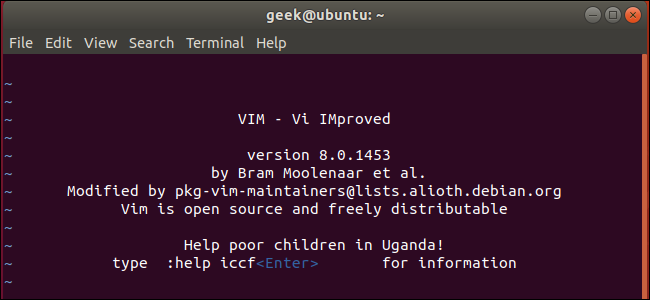
- Vim text editor commands full#
- Vim text editor commands code#
/g means global, otherwise it would only execute once per line. /foo is regex to find things to replace. For example, to do a global find and replace type :%s/foo/bar/g to replace all ‘foo’ with ‘bar’ To enter command mode type ’:’ from normal mode and then type your command which should appear at the bottom of the window. Enter by pressing +vĬommand mode has a wide variety of commands and can do things that normal mode can’t do as easily. Vim text editor commands full#
linewise-visual: always select full lines. block-visual: select any rectangular region. 
The visual mode actually has multiple subtypes: visual, block-visual and linewise-visual To leave visual mode and return to normal mode, press Esc or.
to enter visual block mode, this will make text selections by blocks moving the cursor will make rectangle selections of the text. V to enter visual line mode, this will make text selections by line. Visual mode also has the following variants: Move the cursor to the desired end selection point vim will provide a visual highlight of the text selection. Press v to enter visual mode, this will also mark a starting selection point. Selecting text allows commands to apply only to the selection, such as copying, deleting, replacing, and so on. Visual mode is used to make selections of text, similar to how clicking and dragging with a mouse behaves. To leave insert mode and return to normal mode, press Esc or Visual Mode Also, beware of staying in insert mode for too long Vim is not designed to be used in insert mode all the time. There are so many more ways of inserting text in Vim that can’t be listed here but these are the simplest. O inserts a new line above the current one and enters insert mode on the new line. A moves the cursor to the end of the line and enters insert mode. I moves the cursor to the beginning of the line and enters insert mode. These commands have an uppercase variety too: o inserts a new line below the current line and enters insert mode on the new line. a for ’ append’, this moves the cursor after the current character and enters insert mode. i for ’ insert’, this immediately switches vim to insert mode. You can enter it by using an insert command from normal mode. Once in insert mode, typing inserts characters just like a regular text editor. This is the second most used mode, and will be the most familiar behavior to most people. If you want to redo ( i.e., undo your undo) press Ctrl+r in normal mode. This undoes changes up to the last time you were in normal mode. 
To perform an undo, press u in normal mode. Similarly, you can delete single characters by moving your cursor over it and pressing x. For example, to replace a single character, move your cursor over it and press r, and then the character you want to replace it with. You can also make changes to single characters in normal mode. This particularly helps touch typists who don’t like leaving the home row when making changes. In addition to using the cursor keys to move around, you can use h (left), j (down), k (up), and l (right) to move as well. In normal mode, there are multiple ways to move around an open file. Remember, this is what makes Vim different. Normal mode is where one should spend most of their time while using Vim.
 E move to end of word before a whitespace.
E move to end of word before a whitespace. 
B move to beginning of previous word before a whitespace.W move to beginning of next word after a whitespace.That is, they don’t insert text into the document instead, certain key presses can: Move the cursorĪs many vim commands, row movement can be prefixed by a number to move s everal lines at a time: In Normal mode key presses don’t work as one would expect. Normal mode can be accessed from other modes by pressing Esc or. Normal Modeīy default, Vim starts in “normal” mode.
Vim text editor commands code#
Because Vim is focused on changing existing code just as much as writing new code, it is split into several modes that each have different purposes.









 0 kommentar(er)
0 kommentar(er)
